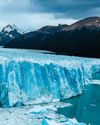The world's dams hold so much water they've shifted Earth's poles
How It Works UK
|Issue 206
The construction of thousands of dams since 1835 has caused Earth's poles to wobble, new research suggests. Scientists found that large dams hold so much water, they redistribute mass around the globe, shifting the position of Earth's crust relative to the mantle, the planet's middle layer. Earth's mantle is gooey, and the crust forms a solid shell that can slide around on top of it. Weight on the crust that causes it to shift relative to the mantle also shifts the location of Earth's poles. "Any movement of mass within the Earth or on its surface changes the orientation of the rotation axis relative to the crust, a process termed true polar wander," researchers wrote in the journal Geophysical Research Letters.

Scientists already knew human activities that displace enormous volumes of water can trigger polar wander. A study published in March showed that dramatic ice melt due to climate change may move the poles by 27 metres by the end of this century. And a 2023 study concluded that groundwater extraction between 1993 and 2010 caused a polar drift of 80 centimetres. For the new study, researchers examined the impact of 6,862 dams, built across the planet, on Earth's poles between 1835 and 2011. The team used an already-published database of dams, which previously revealed that the volume of water held by these dams, a volume that could fill the Grand Canyon twice, had resulted in a 23-millimetre fall in global sea levels.
Bu hikaye How It Works UK dergisinin Issue 206 baskısından alınmıştır.
Binlerce özenle seçilmiş premium hikayeye ve 9.000'den fazla dergi ve gazeteye erişmek için Magzter GOLD'a abone olun.
Zaten abone misiniz? Oturum aç
How It Works UK'den DAHA FAZLA HİKAYE
How It Works UK
20 WEARABLE HEALTH TRACKERS
Whether you strap a wellness coach to your wrist or weave subtle sensors into your clothes, these devices are revolutionising how we track our health
9 mins
Issue 210
How It Works UK
SUPERPOWERED PLANTS
The world of plants is vibrant and diverse, just like this book.
1 min
Issue 210
How It Works UK
SECRET STORIES OF LOST BEASTS
We're all aware of the mighty dinosaurs that once roamed Earth, but there are so many weird and wonderful species that have been lost to time.
1 min
Issue 210

How It Works UK
ALL ABOUT BLIMPS
Is it a bird? Is it a spaceship? No... it's a non-rigid airship
2 mins
Issue 210
How It Works UK
SUPER QUESTERS MISSION: RAINFOREST MAGIC
Join adventurers Leo, Lilli and Bea as they transform into superheroes and journey to the rainforest in the pursuit of knowledge.
1 min
Issue 210

How It Works UK
HOW THE MIGHTY MAMMOTH RULED THE ICE AGE
Meet the prehistoric giants that roamed the Arctic Circle thousands of years ago
4 mins
Issue 210
How It Works UK
Have they found LIFE ON MARS?
Although it's by no means certain, scientists are slowly accumulating evidence that life once existed on the Red Planet
2 mins
Issue 210

How It Works UK
HOW FAST DO GLACIERS MOVE?
The speed at which a glacier flows depends on its mass, the depth and slope of the underlying rock bed and friction.
1 min
Issue 210

How It Works UK
HOW IN-FLIGHT WI-FI WORKS
This technology allows you to scroll to your heart's content while killing time at cruise altitude
3 mins
Issue 210

How It Works UK
HOW WIGWAMS WERE BUILT
Discover the construction and living conditions inside these traditional domed dwellings
1 mins
Issue 210
Listen
Translate
Change font size

